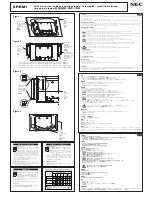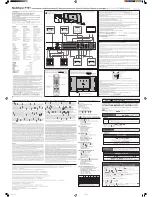
5. MAINTENANCE, ADJUSTMENTS AND CALIBRATION
Page 137
© 1998-2007 DH Instruments, a Fluke Company
the low side is connected to the DOWN (LO) port (see
Figure 15
). Open the
DOWN (LO) port to atmosphere by installing the accessory quick connector.
If the calibration standard has a “low”, “minus” or “reference” port, consider
connecting it to the molbox RFM DOWN (LO) port to assure that the
calibration standard and molbox RFM are at the same ambient pressure.
Use a quick connector stem (
DHI
P/N 101889, equivalent to Swagelok SS-
QM2-S-200) supplied in the molbox RFM accessories to make the
connection. The fitting on the quick connector stem that must be mated to is
a compression type for 1/8 in. tube.
To properly calibrate the microrange RPT, its low side must be open to
atmosphere or connected to the low side of the calibration reference. The
molbox RFM DOWN (LO) quick connector contains a shut-off valve so leaving
the quick connector “open” actually isolates the low side of the microrange
RPT. Therefore, one of the two quick connector stems (DHI P/N 101889,
equivalent to Swagelok SS-QM2-S-200) supplied in the molbox RFM
accessories must be connected to be sure that the low side of the RPT is
vented. The accessory stems do not have shut-off valves. The quick
connector stems on the molbox to molbloc tubes also have shut-off valves
so they are closed when not connected.
5.2.4
VIEWING AND EDITING RPT READINGS AND
CALIBRATION INFORMATION
Editing RPT calibration information will affect molbox RFM pressure measurements and
can cause out of tolerance flow measurements. RPT calibration information should only
be edited by qualified personnel as part of the calibration process. Caution should be
taken to avoid accidental editing. For information on preventing access to calibration
information see Section 3.6.2.
PURPOSE
To read the output of molbox RFM RPTs in calibration mode; view and edit the calibration
coefficients and calibration date.
PRINCIPLE
The molbox RFM CAL function contains all of the functions needed to perform RPT
calibrations in one menu area.
This includes:
•
Viewing molbox RFM RPT outputs (pressure readings) directly without the
tare
applied
and configured for application of calibration pressures to run the calibration (see
Section 5.2.4.1).
•
V i e w i n g
P A
a n d
P M
c a l i b r a t i o n c o e f f i c i e n t s a n d t h e c a l i b r a t i o n d a t e (see
Section 5.2.4.2).
•
E d i t i n g
P A
a n d
P M
c a l i b r a t i o n c o e f f i c i e n t s a n d t h e c a l i b r a t i o n d a t e (see
Section 5.2.4.2).
See
Section
5.2.1 for information on molbox RFM calibration coefficients (PA and PM) and
their proper use.
















































